The Storm Prediction Center (SPC) is part of the National Weather Service (NWS) and the National Center for Environmental Prediction (NCEP). Their mission is to provide accurate forecasts and monitor the timing of thunderstorms and severe storms in the United States. The SPC provides convective outlooks on Day 1, Day 2, and Day 3 that reflect the overall level of severe weather hazard through a list of forecast statistics that identify areas at risk of mild thunderstorms and severe thunderstorms across the contiguous United State. For more information on how to read this map, please see the bottom of this page.
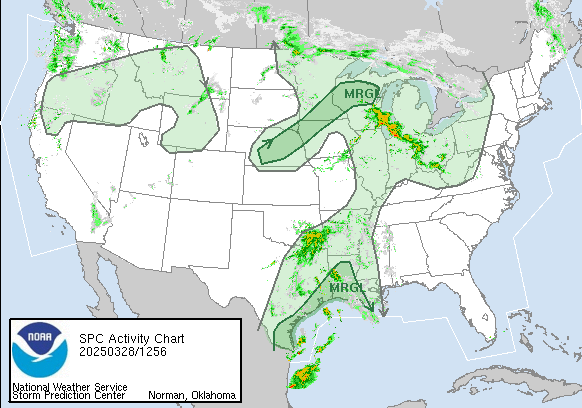
Convective Outlook Day 1
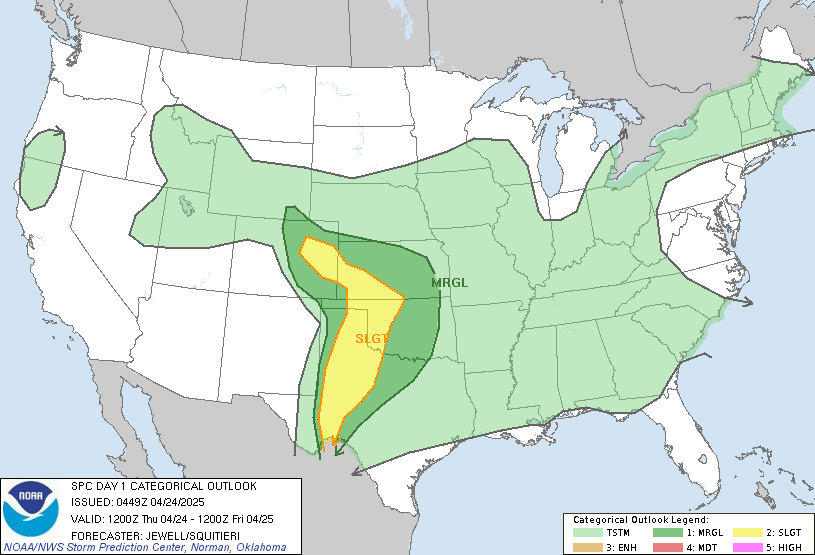
Convective Outlook Day 2
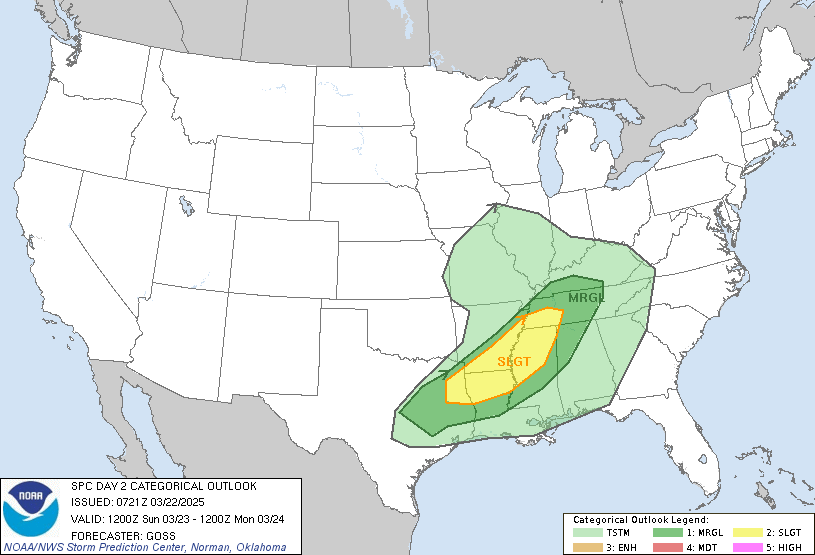
Convective Outlook Day 3
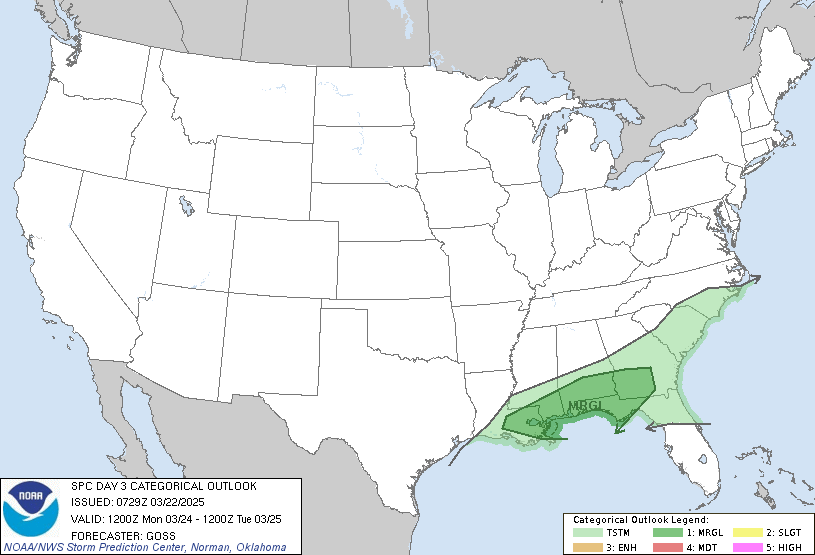
Convective Outlook Day 4-8
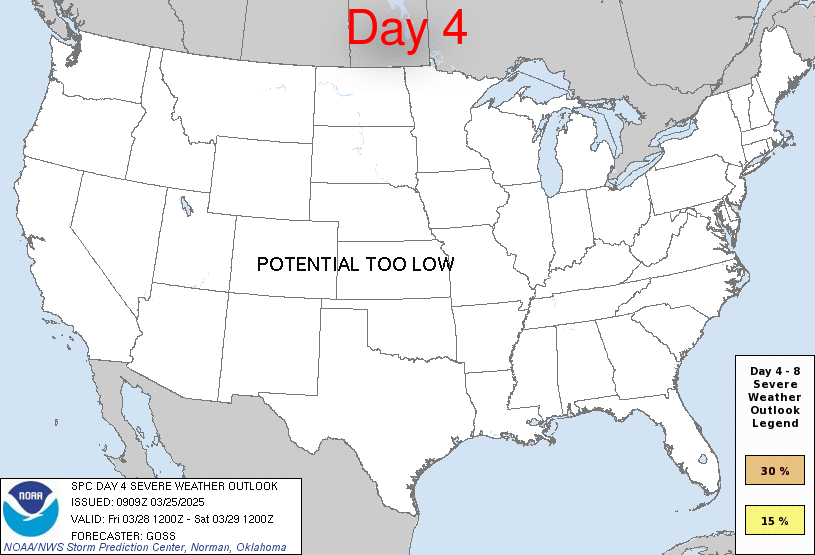
Convective Weather Outlook Legend Data
- TSTM (light green) – General or non-severe thunderstorms – Delineates, to the right of a line, where a 10% or greater probability of thunderstorms is forecast during the valid period.
- 1-MRGL (dark green) – Marginal risk – An area of severe storms of either limited organization and longevity, or very low coverage and marginal intensity.
- 2-SLGT (yellow) – Slight risk – An area of organized severe storms, which is not widespread in coverage with varying levels of intensity.
- 3-ENH (orange) – Enhanced risk – An area of greater (relative to Slight risk) severe storm coverage with varying levels of intensity.
- 4-MDT (red) – Moderate risk – An area where widespread severe weather with several tornadoes and/or numerous severe thunderstorms is likely, some of which should be intense. This risk is usually reserved for days with several supercells producing intense tornadoes and/or very large hail, or an intense squall line with widespread damaging winds.
- 5-HIGH (magenta) – High risk – An area where a severe weather outbreak is expected from either numerous intense and long-tracked tornadoes or a long-lived derecho-producing thunderstorm complex that produces hurricane-force wind gusts and widespread damage. This risk is reserved for when high confidence exists in widespread coverage of severe weather with embedded instances of extreme severe (i.e., violent tornadoes or very damaging convective wind events).
This data is courtesy from the Storm Prediction Center

